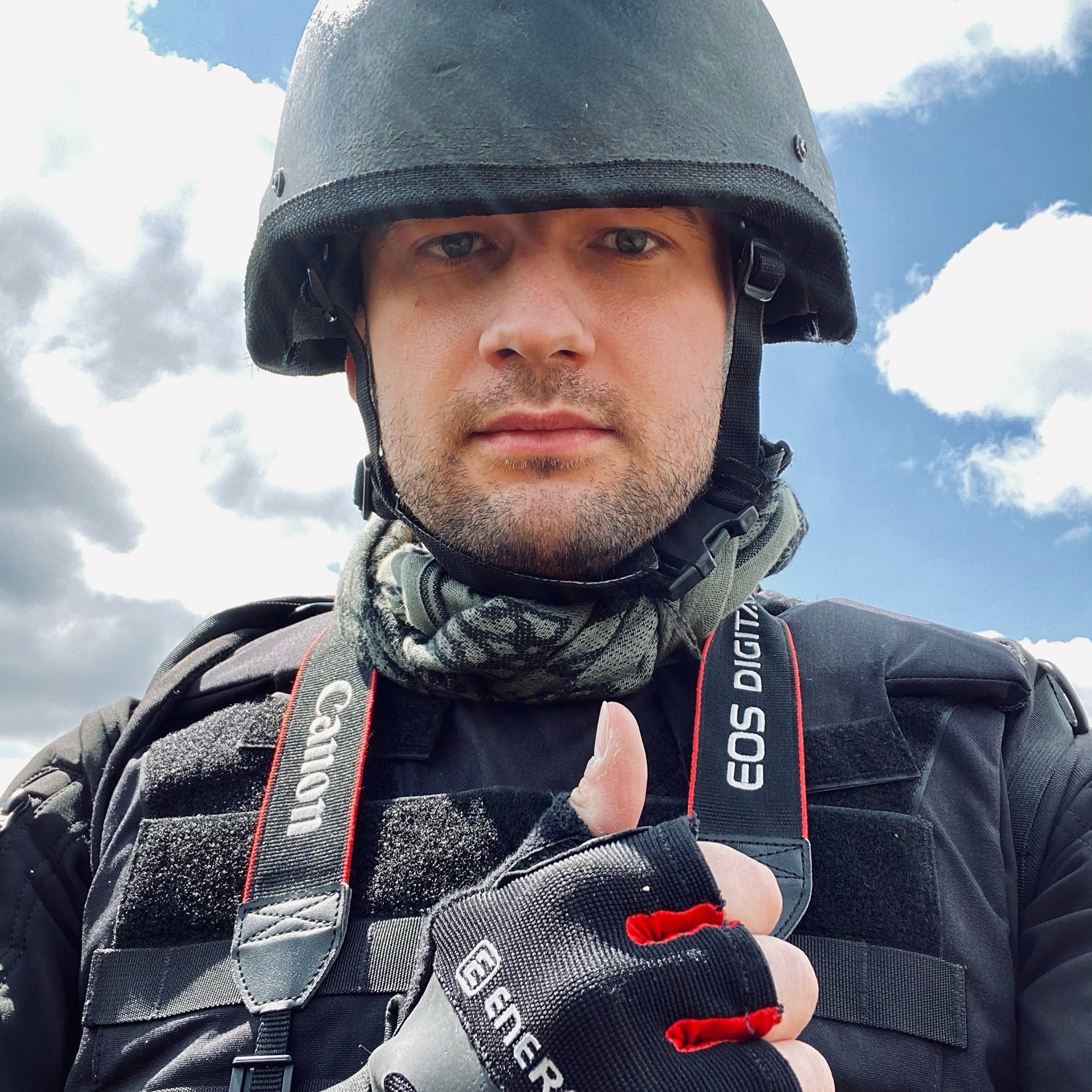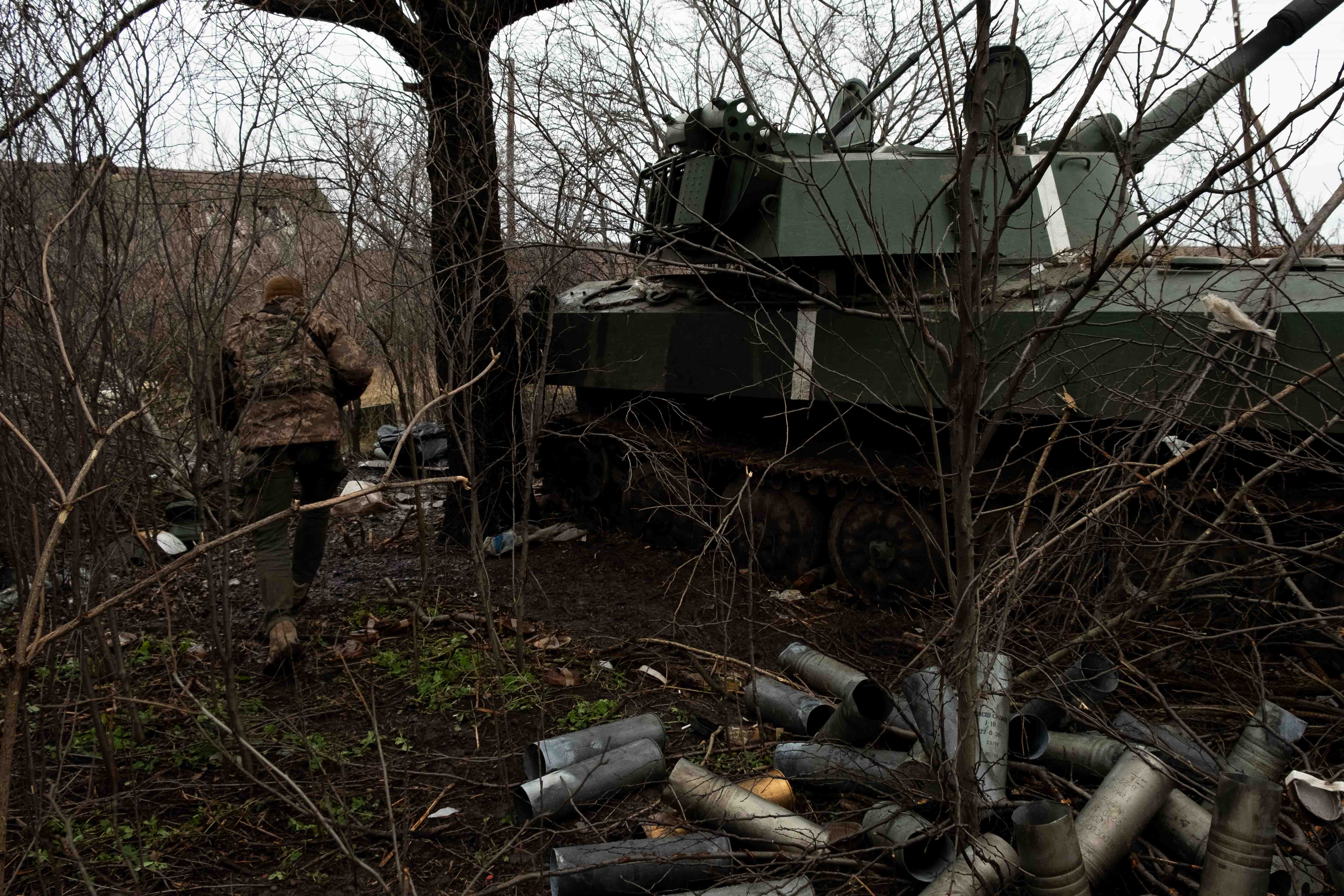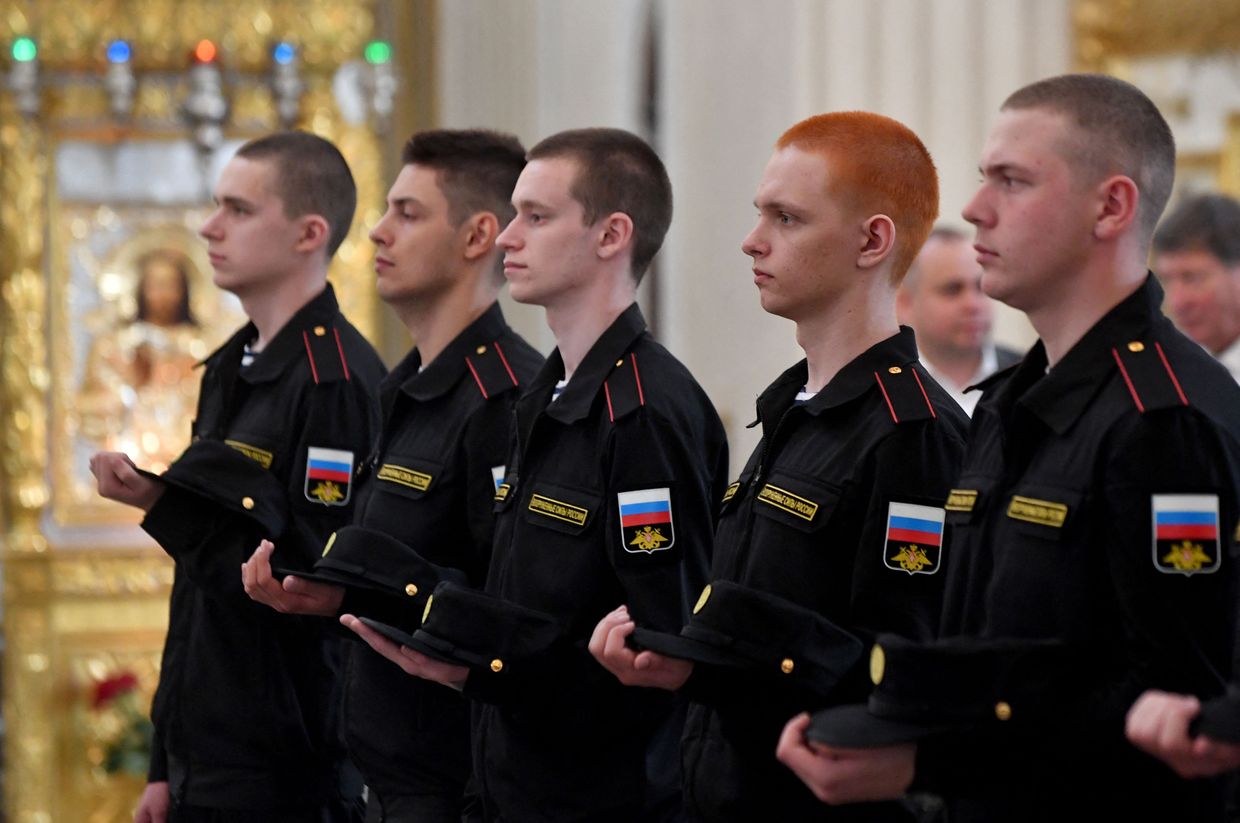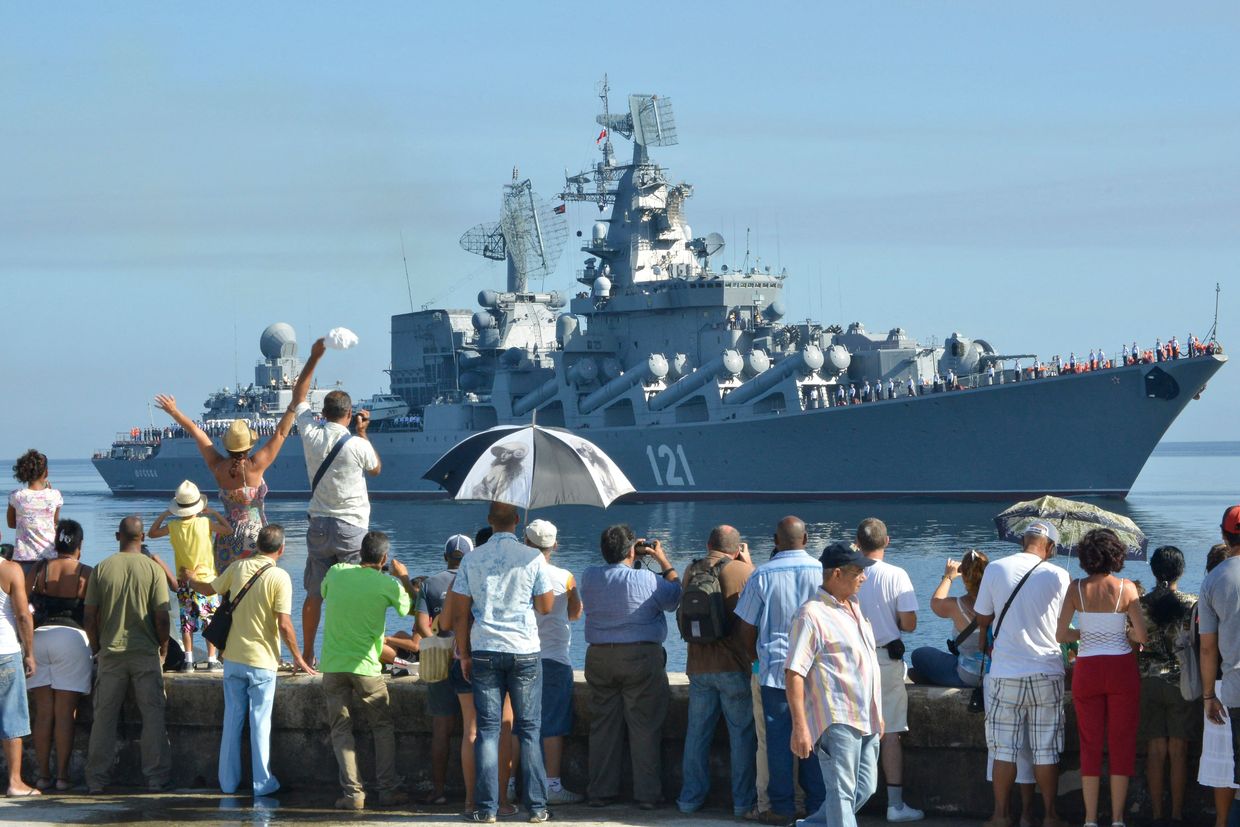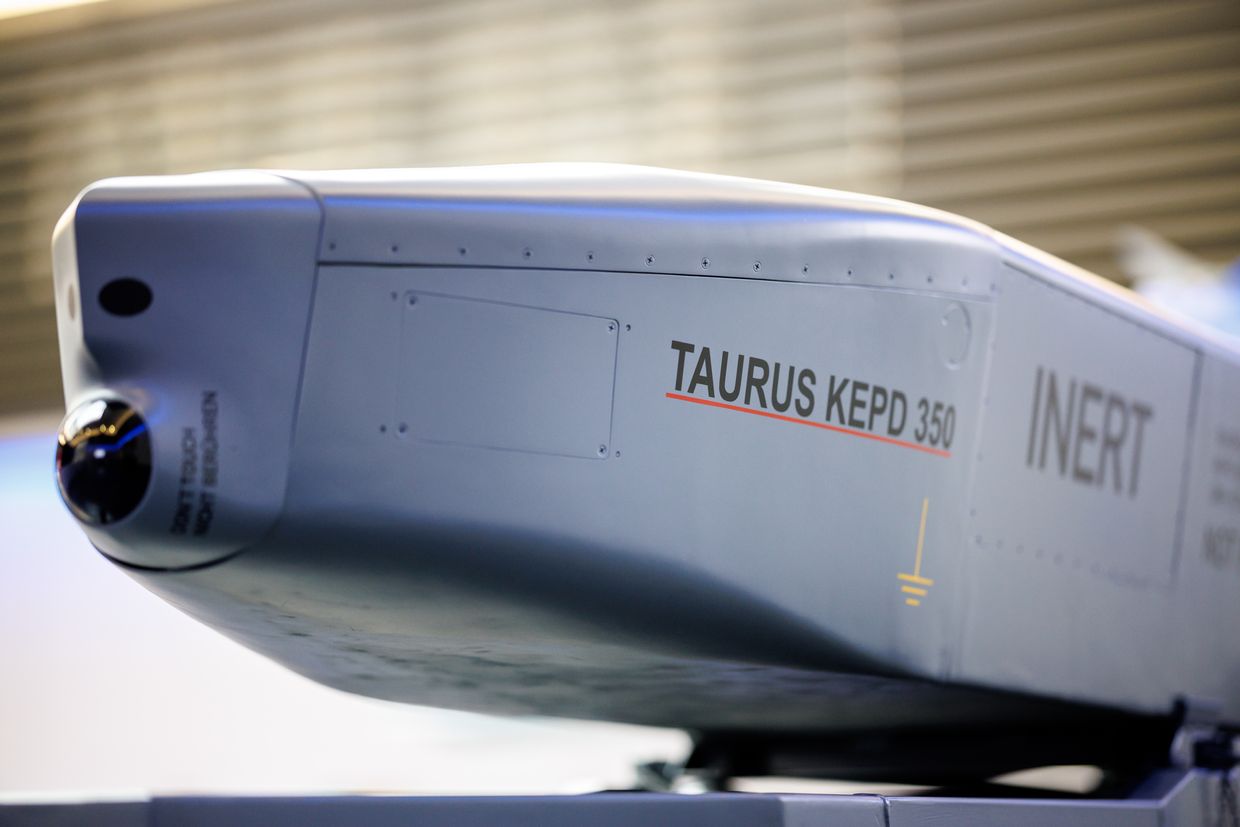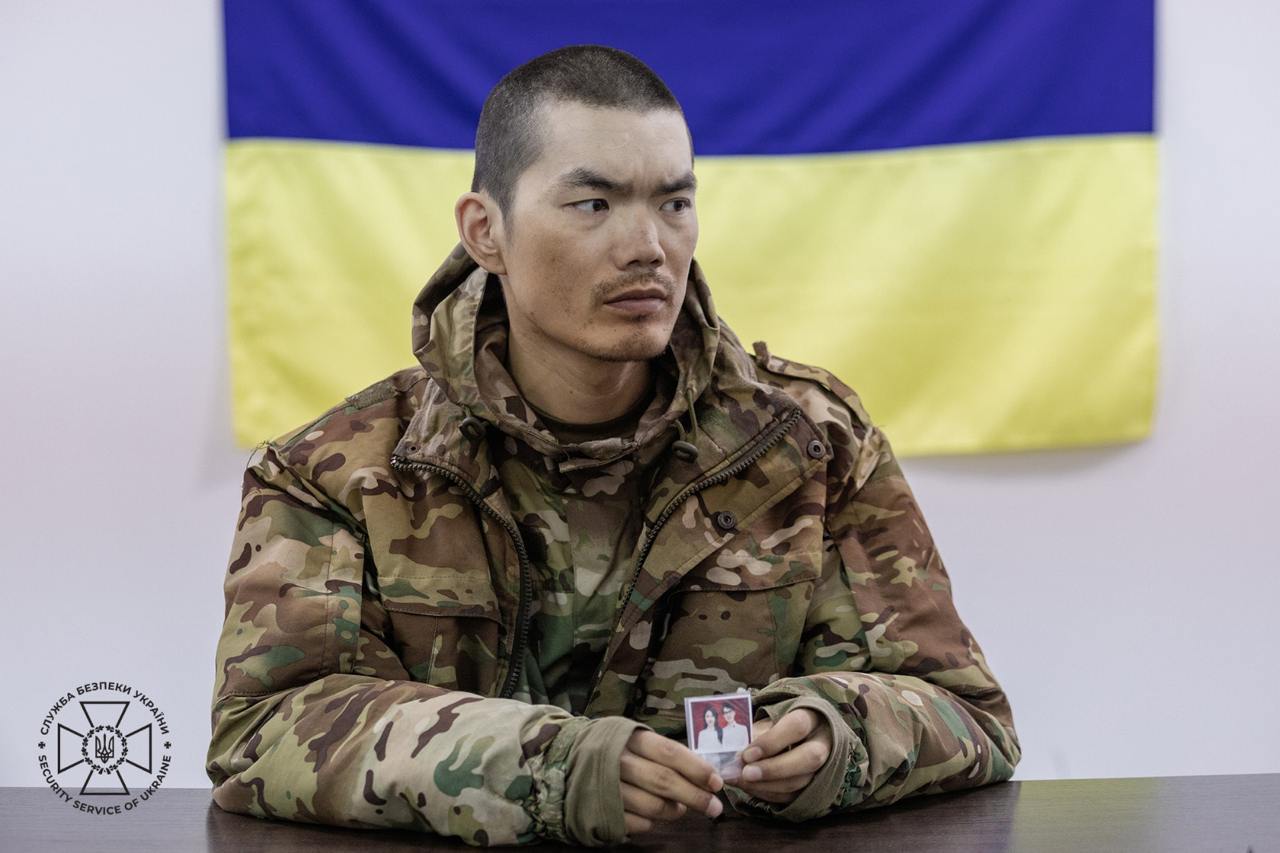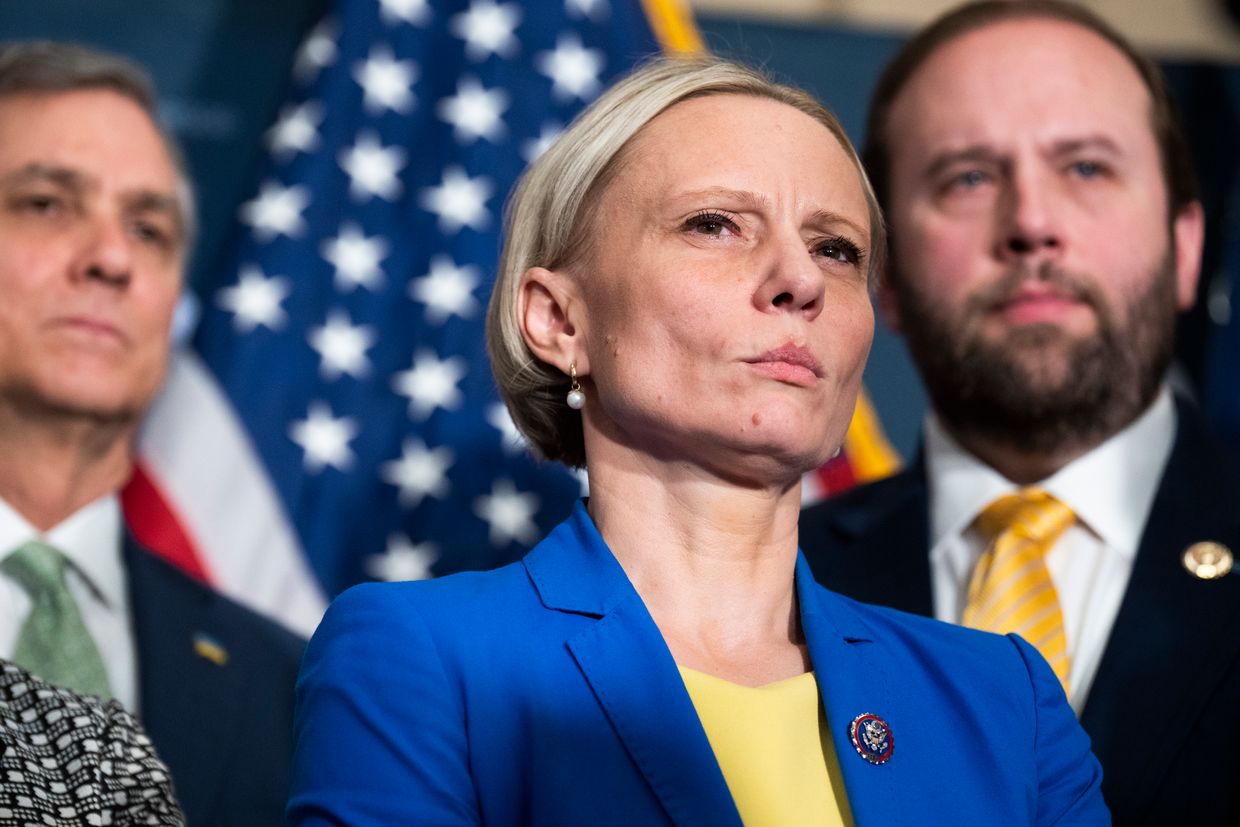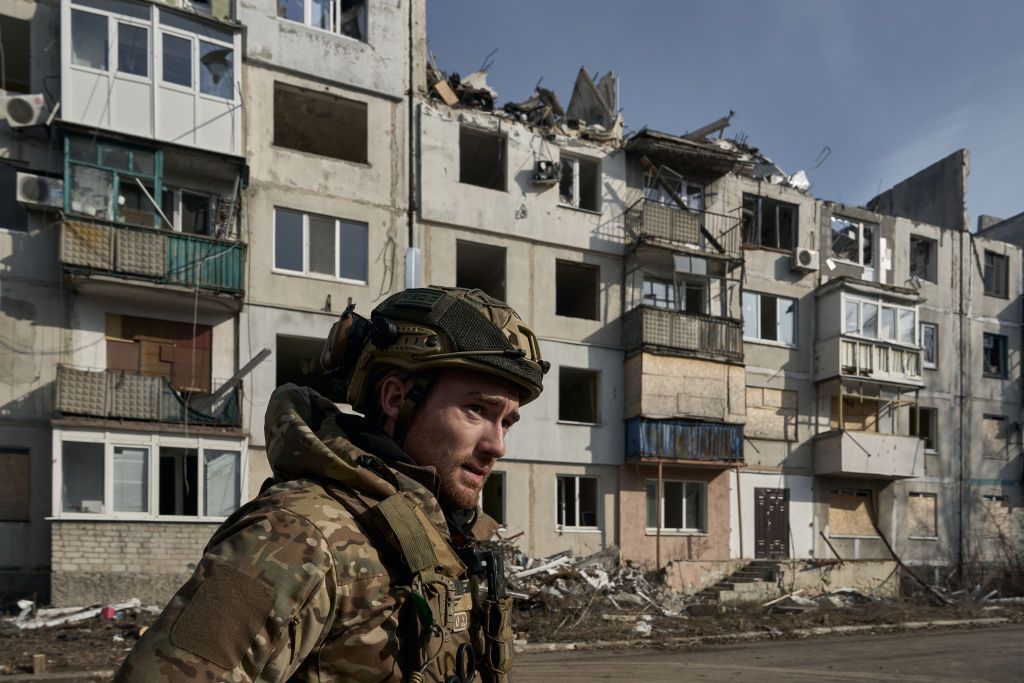BAKHMUT, Donetsk Oblast — It’s the last days of December and the heat of the holiday season. But an artillery battalion with Ukraine’s 24th Mechanized Infantry just couldn’t care less.
For them, it’s like Groundhog Day – just another day of war that keeps repeating over and over.
From their place in an abandoned village in Donetsk Oblast, they support Ukrainian infantry repelling Russian frontal attacks in Bakhmut. The site of the most grueling battle of Russia’s war in Ukraine so far, Bakhmut has been drawing comparisons with World War I’s deadly Battle of Verdun.
A 122-millimeter 2S1 self-propelled howitzer Gvozdika is waiting in the bushes, the dry grass around it charred after the gun’s multiple shots on the spot.
The gun is on standby. The artillerymen are in an abandoned house nearby, where they try to keep close to the cellar. The radio buzzes: A warning comes that Russians counter-shot some of this battery’s guns this morning, “so you guys better watch out.”
Time after time, other Ukrainian howitzers rattle the air. The thunder of impact rolls through the steppe, and plumes of whitish smoke rise on the horizon. The artillery duel between Russians and Ukrainians is brutal. Russian artillery is attacking from Opytne, a town just south of Bakhmut.
“Hey, did you see what happened to those dudes from our regiment the other day?” one of the crew tells his mates.
“By some miracle, the recon told them Russians were about to target their area. So they took cover at the last minute. But their machine is absolutely down. A knock-out hit.”
He pulls out a picture of a burning 2S1 howitzer on his smartphone.
“Shit happens, but they are all fine now.”
Tanks, Humvees, and seen-it-all 4x4 trucks roar time and again near the house as they try to dash through the unbelievable swamps of dirt roads.
The radio buzzes again.
“Ah, fuck,” the artillerymen drop their cigarettes and rush to the gun.
Two rounds are requested. The infantry fighting in Bakhmut need urgent support.
The howitzer gets loaded. The coordinates have been adjusted.
“Fire!” the gun’s commander shouts.
The old Soviet howitzer spits out a shot, instantly filling the air with smoke and the smell of expelled propellant. And one more time. The work is done — for now.
The crew get back to the same rhythm of waiting in a cold abandoned house for command. The wait may last a few minutes or painfully endless hours.
The grueling Battle of Bakhmut lasts for five months, but Russian forces, despite insane pressure and massive losses, have not yet managed to capture the important city, the local transportation hub and one of key fortresses of Donbas. Their slow advances finally got them to the city’s outskirts – in many ways due to their overwhelming artillery power.
But over recent weeks, Russian advances in the area have been dying down.
The Battle of Bakhmut is likely culminating.
According to international monitors, Russian forces appear to be losing their biggest advantage over Ukraine — the seemingly near-endless stocks of artillery munitions. After so many months of inadequately costly effort to encircle the Ukrainian fortress city, even popular Russian war bloggers admit the acute munitions hunger that is now impeding their advances.
Ukrainian forces on the ground confirm the rapidly decreasing activity of Russian artillery.
But meanwhile, Ukrainian artillery, despite extensive Western supplies, also struggles to make its best due to lack of munitions, especially when it comes to old Soviet standards.
On the ground, this results in horrific losses among Ukrainian infantry holding the ground for months.
‘This is good for us’
Behind this grid of artillery guns pounding Russian lines around the clock, there’s just one man.
He sits at a desk in front of a laptop and an iPad in a townhouse close to the howitzers. The room is heated hot with a stove, and he is sipping coffee from his mug. This humble working place is a priority target for Russian counter-battery activity.
The man, Stepan, is watching the real-time picture of the battlefield, transmitted by the drones in the air. He coordinates the artillery strikes delivered at requests of infantry.
His iPad shows fields of black and green surrounding Bakhmut. As far as the drone’s electric eye can see, everything up to the horizon is a giant moonscape of black impact holes.
Time and again, new plumes of smoke rise up in the field from fresh impacts.
“Our godawful Starlink just isn’t working the way it should,” the specialist says as he angrily digs into his laptop.
“How am I supposed to work when the internet is so damn slow?”
As simple as that, the Ukrainian military shares the picture from drones with other units via link-only live streams on YouTube.
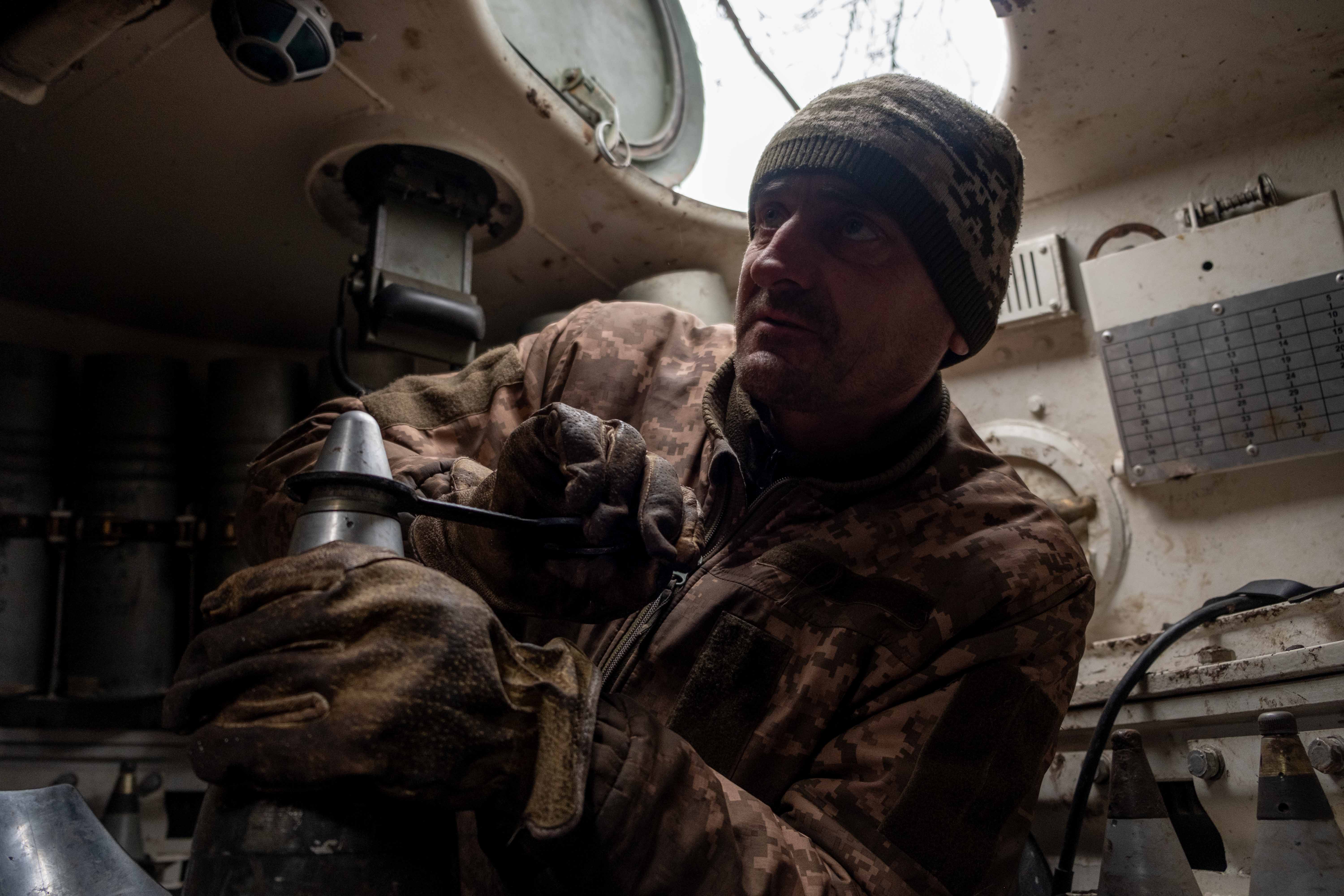
Russia initiated the Battle of Bakhmut in August, following the failure of its attempts to advance in other axes, particularly in Donbas.
After months of intense frontal attacks, spearheaded by Russia’s notorious military company Wagner Group, it has become the meaning of devastating losses on both sides.
After five months of fighting, Russian forces near Bakhmut have only advanced between 6 and 12 kilometers east and south of the city. Since September, they have stood at the eastern outskirts of Bakhmut.
But neither frontal attacks nor attempts to isolate the Bakhmut garrison from the north (via Soledar) and the south (via Kurdiumivka) have had limited results, although they put the city closer to the downfall.
According to Ukrainian intelligence, in December, Russia had concentrated 40 battalion tactical groups and the largest artillery force in the area.
After the Russian military’s spectacular failures in Kharkiv and Kherson, the battle for Bakhmut has become the Kremlin’s only realistic chance to get a victory that can be used to reinforce the pro-war propaganda.
For this sake, the Wagner Group, headed by increasingly powerful Kremlin insider Yevgeniy Prigozhyn, is going as far as the mass recruitment of convicts in Russian prisons to be thrown in the meat grinder of Bakhmut.
In December, it felt like Bakhmut might fall soon.
Russian forces made gains south of the city, aiming to sever the vital road running west to the city of Kostyantynivka. Had they succeeded, Ukrainian forces would have to withdraw from the city to avoid a death trap.
Russian forces managed to enter the eastern outskirts of Bakhmut in December. But on Dec. 21, the day after President Volodymyr Zelensky made a surprise visit to the city, Ukrainian forces managed to carry out a tactical counter-attack and drive Russia out of the city.
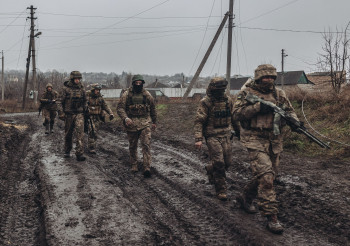
And then on Dec. 27, the head of Ukraine’s military intelligence General Kyrylo Budanov was seen visiting his scouting troops deployed in Bakhmut just 600 meters from Russia’s lines.
Many indicators allege that Russia’s pressure in Bakhmut is finally reaching its limits.
Ukrainian forces are sustaining between 3 and 8 infantry attacks in the area daily, according to troops on the ground. But over the last few weeks, Russians were seen switching to using small squads of between 10 and 15 men instead of company or battalion-sized tactical groups.
Besides, Russian airborne units were also reportedly deployed to the Bakhmut area to augment the Wagner Group, seriously degraded after months of costly attacks.
Another factor is the reportedly diminishing Russian artillery power.
In late December, Budanov said that the daily spending of Russian artillery in combat dropped from 60,000 to between 19,000 and 20,000 rounds by the end of 2022.
Moreover, according to the general, by March 2023, these issues will be even more obvious.
On Dec. 24, the United Kingdom’s Ministry of Defense also said Russian forces currently lack the necessary stockpile to support large-scale offensive operations and sustain defensive operations in Ukraine.
Rumors on deteriorating munitions have been circulating for quite some time in Russian pro-war Telegram channels. An escalation came on Dec. 27, when the Wagner Group released a video in which two militants insult Russia’s Chief of General Staff Valeriy Gerasimov and accuse him of severe lack of artillery munitions in the Bakhmut area.
Conflict Intelligence Team (CIT), an open-source investigations group, however, says the current situation is precipitated by poor and ineffective logistics rather than the physical absence of munitions in Russia’s stockpile per se.
“The intensity has definitely dropped several-fold, that’s true,” artillery specialist Stepan told the Kyiv Independent near Bakhmut, as Ukrainian howitzers kept booming behind the house windows.
“Including in terms of counter-artillery activity. Which is good for us.”
From the Ukrainian side, however, the situation is no better.
Especially when it comes to Soviet-standard munitions, the main stocks of which had been largely depleted back in summer. According to the 24th Brigade artillerists, at the beginning of Russia’s war, each battery used to get up to 150 full loads of munitions a day (which corresponds to up to 6,000 rounds). Now they’re getting only up to 30 full loads a day.
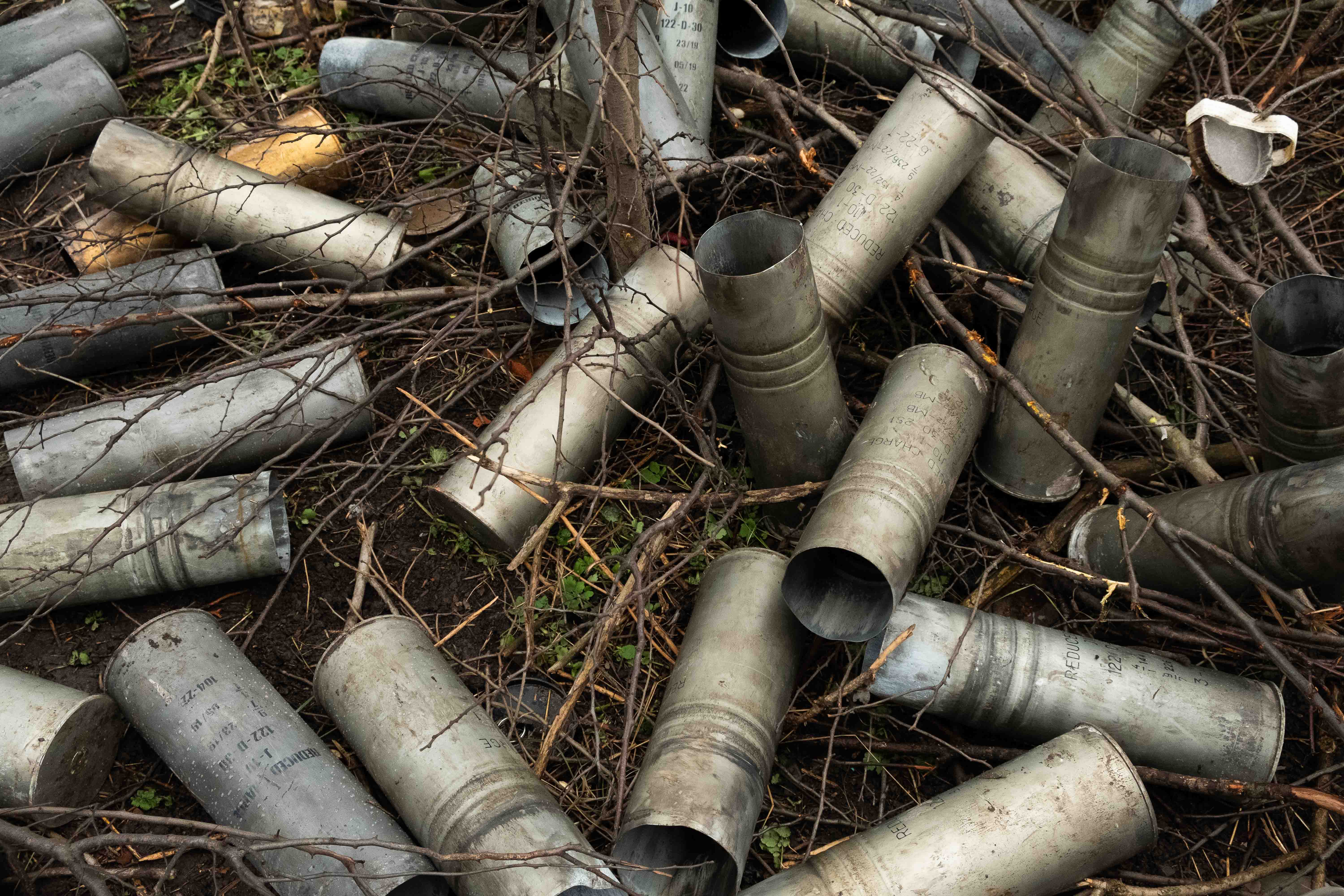
“We need every single 122-millimeter round anywhere in the world so we could go on helping our infantry. We do everything we can, but we don’t have much ammo,” Ukrainian artillerists say.
“You just can’t have enough rounds in this war.”
According to the Institute for the Study of War (ISW), a U.S.-based defense think tank, the depletion of the Russian stockpile “will likely in part prevent Russian forces from maintaining a high pace of operations in the Bakhmut area in the near term.”
From the ISW’s perspective, the most brutal battle of this war is likely culminating.
“U.S. military doctrine defines culmination as the ‘point at which a force no longer has the capability to continue its form of operations, offense or defense’,” the ISW said on Dec. 29.
“And ‘when a force cannot continue the attack and must assume a defensive posture or execute an operational pause.’ If Russian forces in Bakhmut have indeed culminated, they may nevertheless continue to attack aggressively. Culminated Russian forces may continue to conduct ineffective squad-sized assaults against Bakhmut, though these assaults would be very unlikely to make operationally significant gains.”
Moreover, according to a British intelligence report issued on Jan. 3, over the previous 10 days Ukraine had committed fresh reinforcements to the Bakhmut area. And Russian attacks by the Wagner Group intensified in mid-December, but were poorly supported.
“Russian offensive operations in the area are now likely being conducted at only platoon or section level,” the British Ministry of Defense said.
“It is unlikely Russia will achieve a significant breakthrough near Bakhmut in the coming weeks.”
‘We don’t want to just die’
Once one of the best-looking cities of the industrial part of Donbas, the famous manufacturer of salt, Bakhmut is dead now.
Almost no building is left intact. Some buildings are completely razed to ashes, with giant, meters-deep impact holes next to them. Most are damaged but still standing. The street signs wrecked with shell fragments still tell the story of vibrant life in the very recent past.
The apocalyptic streets are empty and silent, except for the roar of artillery guns and the buzz of drones high above. Every now and then, one of the few remaining locals is seen in the street, often carrying bags of humanitarian aid.
According to the military-civilian administration responsible for the area, some 90% of residents have fled. But some 8,700 civilians out of a pre-war population of over 70,000 are still hiding in ruins.
Off and on, Ukrainian tanks drive slowly through the streets of rubble and rusty anti-tank hedgehogs.
All hell is breaking loose on the other side of the Bakhmutka River, which divides the city in half. Russians are standing just at the gates, but they have not broken through.
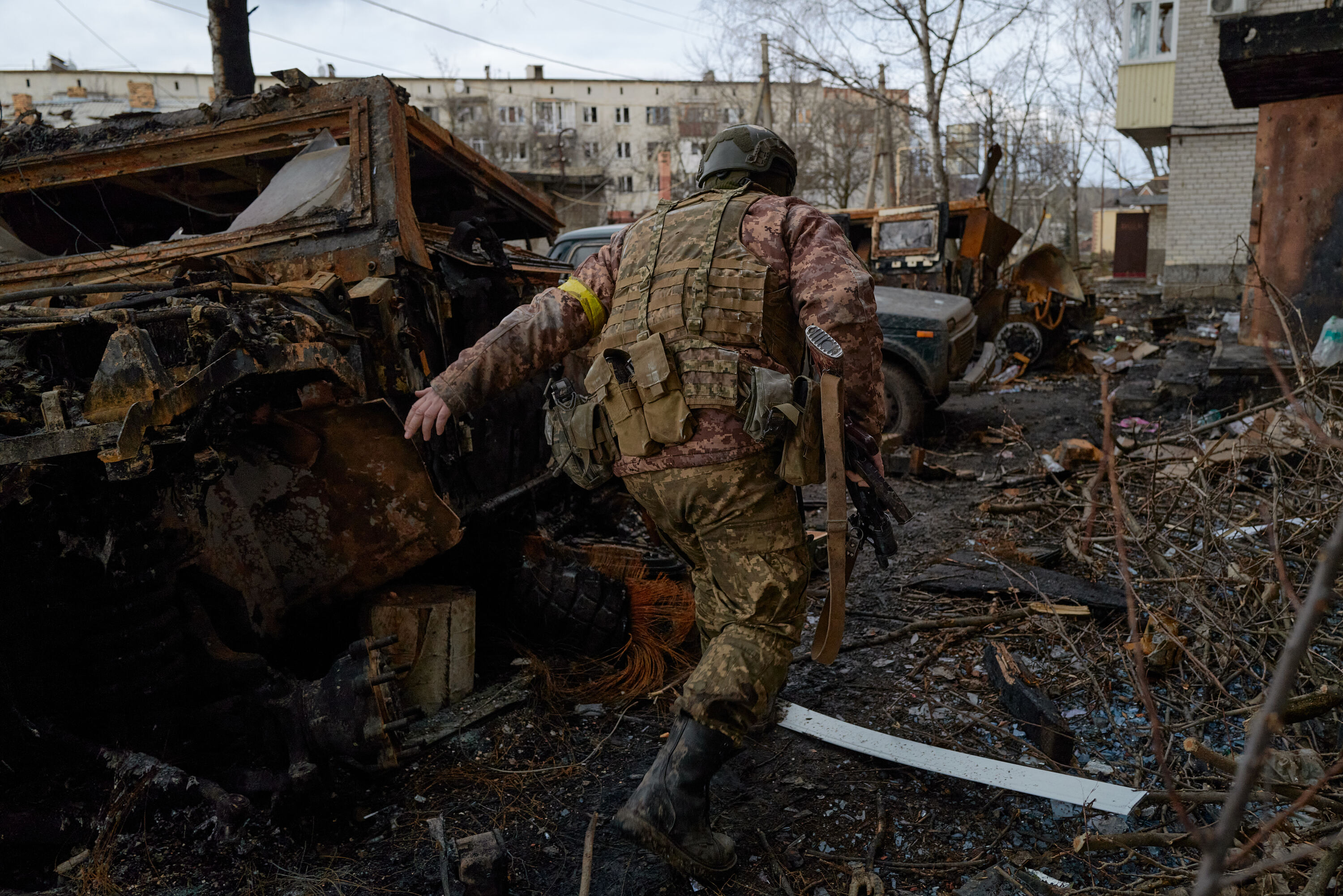
The infantry of Bakhmut — sick, tired, full of bitter resentment — has its own point of view on what’s going on with the most monstrous and dramatic battle of Russia’s war.
“It’s hard even to describe our death toll in there,” soldiers say as they get back to the line after a long-awaited yet short rest in the rear.
“It’s beyond horrific, it’s something a sane human mind can’t imagine. We repel at least three major attacks every single day."
"And Russians roll on, and on, and on, and on. They never stop throwing their scum at us. Sometimes we can hear Wagner commanders talk on communications: ‘Run to the Ukrainian trenches, and whoever makes it — you know what to do."
Soldiers gladly pass an opened bottle of whiskey to journalists. They are just dying to spend a minute talking to a new face before they have to move on.
“It’s such a mess,” they get emotional.
“What they write about us on the internet, all the glorious victories, is so different from what we see here every day. Where is our artillery, what are they even doing? It’s a complete mess. We don’t give a fuck if that’s Wagner or anyone else, we’ll keep fighting anyway.”
“But we want to fight and win, not just fight and die sooner or later.”
__________________________________________________________________________
Note from the author:
Hello! My name is Illia Ponomarenko, the guy who wrote this piece for you.
I hope you found it useful and interesting. I work day and night to bring you quality stories from Ukraine, where Russia is waging the biggest war in Europe since WWII. My little homeland, Donbas, is now the site of the worst fighting. We are helping to keep the world informed about Russian aggression. But I also need help from every one of you — to support Ukrainian wartime journalism by donating to the Kyiv Independent and becoming our patron. Together, we can help bring peace to Ukraine.
